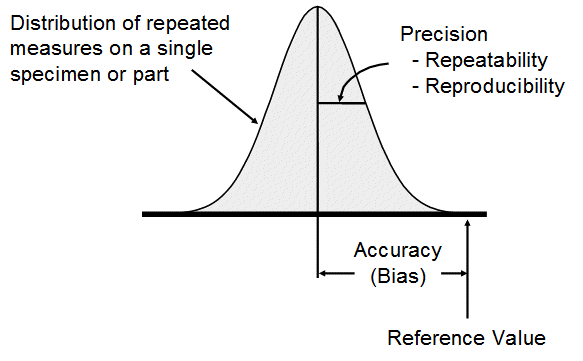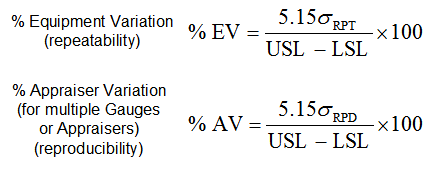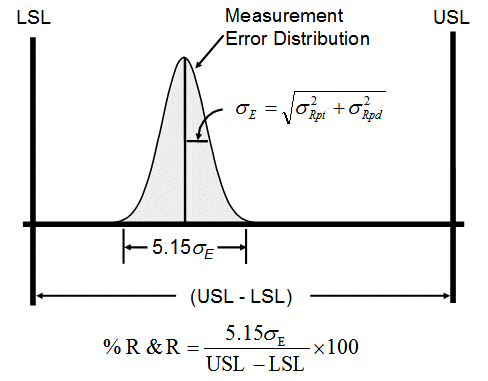Measurement Systems Analysis is intended to determine the performance of a measurement system in regards to measurement error. Measurement Error has nothing to do with calibration except in terms of stability of calibration. Measurement Error deals with the distribution of repeated measures on a single specimen or part Measurement systems must demonstrate:
- Stability through time, or control
- Minimal variation as a proportion of specifications, or capability
- Minimal variation as a proportion of process variation
Measurement System Myths
The measurement system MUST be capable if it:- Costs $80-100,000
- Has a digital readout
- Uses any form of radiation
- Is made in Switzerland
- Has the confidence and assurance of the gauge salesman
- Has been used for 20 years in the plant
- Has an updated certified calibration sticker
- Is supplied by the largest manufacturer of this type gauging
- Is only used by the supervisor
- Measures gauge blocks or standards real well
- Has minimal operator involvement in the taking of the measurement - they just drop in a part and press a button
Measurement Error

Terms
Precision
The closeness of agreement (or variability) between individual measurements or test results
Accuracy (Bias)
The difference between the average of the measurement error distribution and the reference value of the specimen measured
Repeatability
The variation in repeated measurements of the same items with a single measurement system Within appraiser/system variation
Reproducibility
The variation in the average measurements by different appraisers or systems measuring the same items Between appraiser/system variation

Measurement Error Distribution

Measurement Systems Analysis Studies
Potential Studies
- Assess potential of a measurement system to be capable over the long term
- 10 parts measured 2–3 times by one or more appraisers
- A "quick and dirty" study to find out if you are in the ballpark
- Assesses repeatability and reproducibility
- Often called an R&R study
Short-term Studies
- 25 parts measured 5-8 times by one or more appraisers
- A more thorough short-term assessment
Long-term Studies
- 8-10 parts measured 25+ times by one or more appraisers
- Assesses through time stability